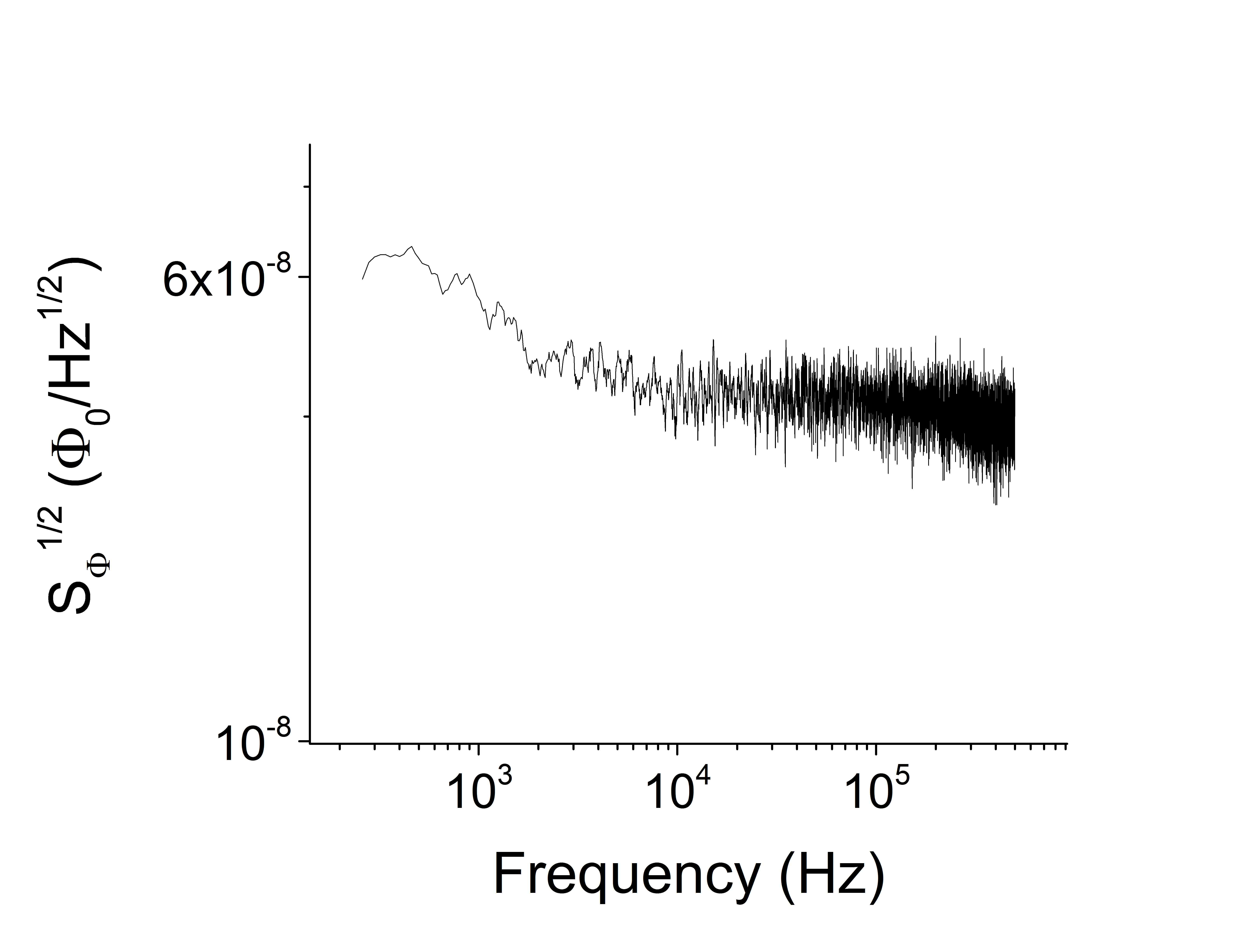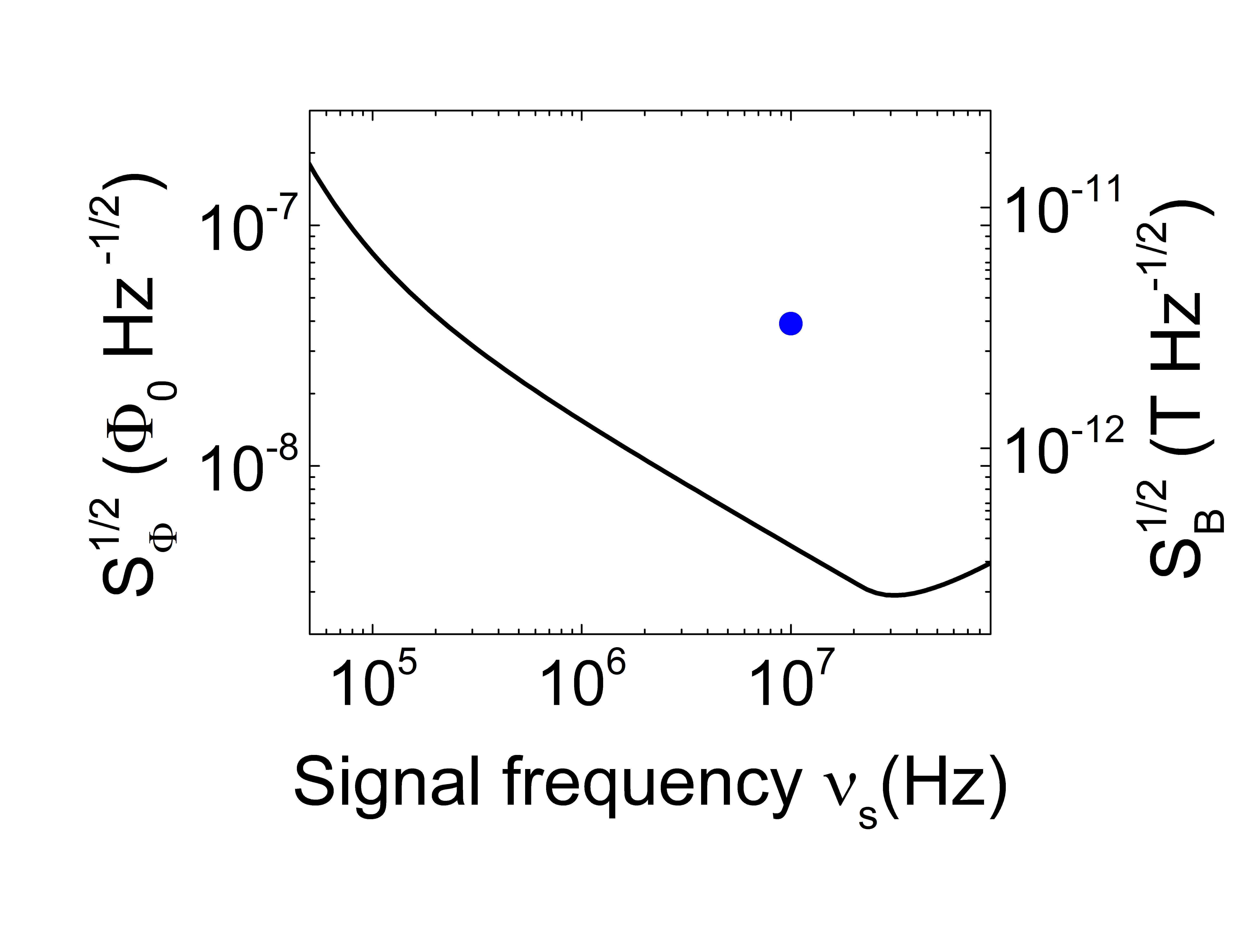Sensitive measurements of various physical quantities, such as time, displacement or electromagnetic fields are an important component of modern science and technology [1]. A quantum sensor relies on quantum behavior to measure “classical” signals. This type of sensor contains a quantum system which is initialized, measured, and controlled to measure physical quantities that appear as parameters in the system Hamiltonian.
We developed a sensitive magnetic field detector based on a flux quantum bit [2]. The qubit is a superconducting loop interrupted by superconducting tunnel junctions, similar in this respect to superconducting quantum interference devices (SQUIDS), which are established sensitive magnetic field detectors. However, the operation mode used for magnetic field detection is closer to atomic magnetometry, where the precession of atomic spins is used to detect small magnetic fields. The strength of the flux qubit as a magnetometer resides in its large effective magnetic moment, about five orders of magnitude larger than for electron spins in atoms.
In the first experiments we used a qubit with a loop size of 24 $latex mumathrm{m}^2$ to detect magnetic fields with a sensitivity of 3 pTesla/$latex sqrt{mathrm{Hz}}$ at 10 MHz, a record detection efficiency for this frequency range, and detection spatial resolution in the micrometer range. The sensitivity can be further improved by an order of magnitude before reaching the limitations imposed by $latex 1/f$ flux noise.
This detector has applications for sensitive measurements with low levels of back-action, in particular for the study of quantum dynamics at low temperatures.
Figure 1: Equivalent flux noise versus frequency, for a central detection frequency of 10 MHz. The noise floor reaches 30 nT/$latex sqrt{mathrm{Hz}}$.
Figure 2: Limits to the detection efficiency, expressed as magnetic flux (left axis) and field (right axis) versus detection frequency. The blue dot represents the sensitivity obtained in the first experiments [2].
[1] Budker, D. and Romalis, M., Optical magnetometry, Nat. Phys. 3, 227–234 (2007).
[2] Bal, M. et al., Ultrasensitive magnetic field detection using a single artificial atom. Nature Communications 3, 1324 (2012).


